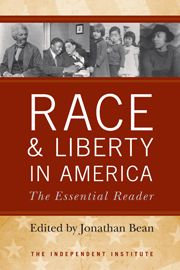During the nomination hearing for Judge Sonia Sotomayor, Senator Al Franken (D-MN) asked whether there was a “right to privacy” that might include abortion or birth control. Sotomayor answered that there was a string of precedents establishing the “right to privacy,” all the way back to a 1920s-era case that gave parents control over their children’s education.
Although she did not mention the case by name, Sotomayor was referring to an issue and decision (Pierce v. Society of Sisters) that deeply divided the nation: The issue was simple: could you be Catholic and “100% American”? The Ku Klux Klan answered with a resounding “No!” as it reincarnated itself to attack American Catholics nationwide. The Klan was so powerful that it secured passage of an Oregon law banning all private schools, and there were bills to do the same in other states. Fortunately, the Court ruled that children were not “mere creature[s] of the State” and struck down efforts to criminalize parochial schooling.
My new book, Race and Liberty in America: The Essential Reader (University Press of Kentucky, in association with the Independent Institute, 2009) emphasizes the role of Christianity (and Judaism) in the classic tradition of civil rights. This “classical liberal” tradition is neither Left nor Right but was deeply influenced by Judeo-Christian notions of natural law. Naturally, Catholics played a role in upholding the “natural rights” of men and women.
Race and Liberty in America discusses how the Catholic Church married interracial couples, a private act that was illegal in dozens of states until the Loving decision of 1967 declared marriage a “natural right.” My entry on Loving includes a statement by U.S. Catholic bishops in support of the plaintiffs. The bishops cited language from the Vatican II Council:
The Church was “committed to the proposition that ‘with regard to the fundamental rights of the person, every type of discrimination, whether social or cultural, whether based on sex, race, color, social condition, language or religion, is to be overcome and eradicated as contrary to God’s intent.’ ”
This was not the first time Catholics stood for the natural right of life and the liberty of marriage or reproduction. During the 1920s, the sole Catholic Supreme Court Justice, Pierce Butler, dissented from the infamous case legalizing sterilization of “inferior” individuals and races (Buck v. Bell, 1927). “Progressive” justice Oliver Wendell Holmes spoke for the majority when he wrote that “three generations of imbeciles are enough.” Holmes invoked the principle of compulsory vaccination as precedent for forced sterilization. Holmes pontificated:
It is better for all the world, if instead of waiting to execute degenerate offspring for crime, or to let them starve for their imbecility, society can prevent those who are manifestly unfit from continuing their kind. The principle that sustains compulsory vaccination is broad enough to cover cutting the Fallopian tubes. Three generations of imbeciles are enough. . . .
When the anti-Catholic Klan was most powerful, its members attacked Catholics as “inferior” and less than “100% American.” The Klan secured immigration quotas limiting migration from Catholic countries. Along with the efforts to ban Catholic schools, the Klan discouraged public schools from hiring Catholic teachers. The situation became so heated that New York Governor (and future president) Franklin D. Roosevelt signed a law that prohibited discrimination on the basis of religion in public school hiring. (FDR’s position on Catholics and Jews left much to be desired but he knew how to land on the right side of a political issue).
In 1924 the Klan flexed enormous political power before crumbling in the midst of a sex scandal and exposé of its corruption. Race and Liberty in America shows how President Calvin Coolidge undercut the KKK by refusing to appear at their massive D.C. rally (the Imperial Wizard was not pleased). Instead, Coolidge chose to address a parade of 100,000 Catholics celebrating the Holy Name Society. Coolidge’s speech advocated religious and racial toleration—a clear blow at the anti-black, anti-Catholic Klan. He spoke of Christian toleration again by addressing the graduating class of Howard University, the historically black college in Washington, D.C.
In a word, Catholics were at the center of many civil rights struggles, including the struggle to be recognized as equal to other Americans. With the help of classical liberalism, they secured their rights to free association (schools) and all the “privileges and immunities” of citizenship. In turn, they fought for the “natural” right to marry whomever we please by drawing upon natural law—a doctrine rooted in Catholic thought. Race and Liberty in America illustrates the power of classical liberal belief in individual freedom, God, and color blind law. Protestants, Catholics, and Jews all contributed to this anti-racist tradition, from 1776 to the present day.
As the Professor-Policeman-President story fades, we might remember that this country has overcome deep-seated hatreds based on religion. Can we do the same with race? Yes, we can. However, rather than concede “rights talk” to the Left and Right, we Americans need to rediscover a tradition that emphasizes our respect for individual dignity. That tradition is deeply rooted in Christian concepts of man and God.








